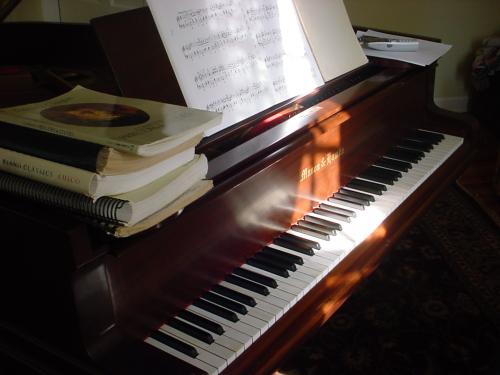How to Seriously Approach the Study of the Piano

How to Seriously approach the Study of the Piano
There are many different styles of music that are well suited to the piano. The keyboard skills for some of the more popular ones such as Jazz, Blues, and Rock, can often be self-taught through books, CDs and tapes. But if one wishes to pursue the study of piano playing as an art form in itself, especially if one wishes to be able to play Classical music, a different approach is necessary. There are a few basic things that must be considered first. Having a tunable, playable instrument in the home (or at least free access to one), is necessary if one wishes to learn to play the piano. Sometimes good deals on used pianos can be found in the local paper, or on the internet. Most piano dealerships offer a "rent with the option to buy" plan for the beginner. These plans often include regular tuning and maintenance. If after a few months of lessons you decide that further study is not right for you or your child, you can return the piano and only be out the rental fee.
Electric keyboards are not pianos. Some "electronic pianos" such as the Yamaha Clavinova, may sound like and have the feel of a real piano, but ultimately, there is no substitute for the real thing. The piano has been called the "King of the Orchestra." Nothing else affords the subtleties of expression or has power of the modern acoustic piano.
As with any musical instrument, the only truly effective way to learn the piano is with a good, reputable teacher. Whether you as an adult wish to study the instrument, or want your children to learn to play, the importance of having a good teacher cannot be overstated.
There are plenty of instruction books available for beginners, both for adults and children, and every teacher has their preference. Your teacher will take you or your child through one of them, one lesson at a time. Be willing to start at the beginning. Take the time to absorb the basics of musical notation. The teacher, and only the teacher, is qualified to make the decision as to when the student is ready to advance to the next level.
A good teacher will usually supplement the material found in the graded instruction books with technical exercises that are appropriate to the student's state of readiness. For children, there are the "Dozen a Day" books of scales and simple finger drills. For the more advanced students, books such as those by Hannon and Czerny contain scales, chords and arpeggios in all keys in addition to scalar finger exercises that cover the entire keyboard. This material is indispensable if the student is to attain velocity, wrist and arm flexibility, and independence of fingers.
Usually the teacher will schedule one lesson per week. Regular, daily practice between lessons is essential. Without practice, the lessons are meaningless. Practice for at least one half hour a day. Work on what your teacher has assigned to you. Do not over do it. Not only does over-practice cause fatigue which can lead to frustration, it can result in painful injury to the hands.
Practice new material slowly. Working with a metronome is recommended. Speed will come, but only with practice. Repeat difficult passages slowly, over and over until they feel natural beneath your fingers. YoYo Ma, the great cellist, would practice the first measure of a Bach Cello piece, sometimes for days, until he could play it perfectly and then, and only then, go on to the next measure.
Practice is doing. A physician practices medicine. He is not rehearsing. By practicing, the pianist, whether a beginner or an accomplished professional concert artist, is playing his or her instrument. Practicing develops and maintains performance skills.
Be patient. Eventually you will develop enough reading and playing skills to begin the study of easy piano pieces. The first volume of the "Music for Millions" series contains many compositions by some of the classical greats that are not only suitable for the beginner, but are published there exactly as originally written by the composer. After a few years, the intermediate student will have access to, and be ready to explore the universe of great musical literature.
In addition to studying music theory, the student is encouraged to listen as often as possible to recordings of the great piano pieces as interpreted by various artists. Whenever possible, obtain the sheet music to these pieces and follow along. This procedure helps to build reading skills and heightens the student's awareness of the subtleties of dynamics and interpretation.
Simply put, there are no short-cuts to learning the piano. It takes patience and dedication. How quickly one learns depends entirely on the individual. But even the reluctant student, like the child who may have been forced to take lessons, can achieve some level of skill. Regular, daily practice is the key. It is the only path to proficiency.




